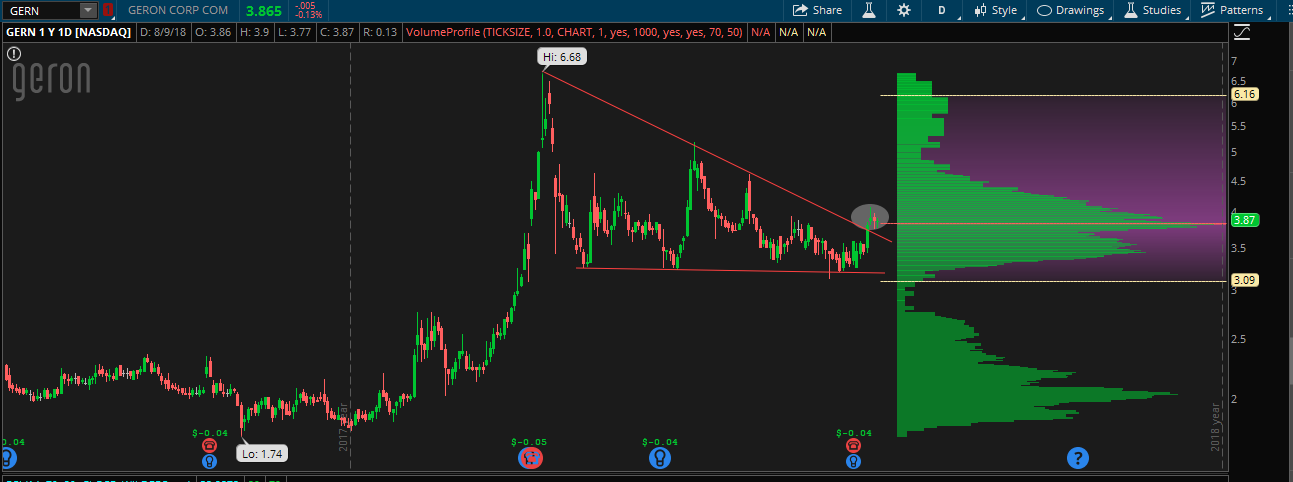Every so often, the market presents us with a textbook setup which adheres to and fulfills all technical rules of a particular price pattern. I screenshot these setups and add them to a folder as reference material to review later. If you follow me on Twitter, you know that I take less of an academic approach to trading, and more of a “whatever makes me money” approach. The following pattern in $GERN would satisfy your textbook writers as well as market participants like myself just trying to make some coin.

Enter the Descending Triangle Pattern. The textbooks require certain guidelines be met to qualify as a true descending triangle:
Price is bounded by two trendlines, the bottom one horizontal and the top downward sloping. Check.
Price should touch each trendline a minimum of two times. Check.
Price crosses back and forth in the pattern, trendline to trendline nearly filling the available space. Not bad.
Breakout of the pattern generally happens at least 65% of the way to the triangle apex, the most powerful happening 80% of the way to the apex. Check. Strong.
I would say $GERN here meets the qualifications of a descending triangle. Due to this qualification, we now have an edge. At minimum, we know that price is set to break out one way or another. But we know that price tends to break out in the direction of price leading up to the pattern, also known as a continuation pattern. It helps to remember that charts are really nothing more than investor footprints, graphical displays of buyers and sellers and price changing hands at levels in which both buyer and seller believe they are correct.
In this case we can see the breakout clearly:

Since we had a textbook pattern followed by a textbook breakout, we can use that information to garner a price target as well as what to expect post breakout.
Having traded this same setup hundreds of times, I know that there will likely be another chance if I missed getting in before the breakout. This second opportunity comes in the form of what the textbooks call a “Throwback.” In short, within 30 days of a breakout price returns to “the scene of the crime” if you will, to the price level where the breakout occurred. Traders that were in for the quick trade are taking profits, sending price back to the breakout level. If you missed it originally, now you have a second chance and a frame of reference for a support level.
As I write this, I am in the green with profits from buying prebreakout. I am currently giving back some of those unrealized gains, but am I nervous about that? Nope. It is part of the trade plan. On the roadmap for this trade, we are in the midst of the Throwback, enjoying the scenery at current price levels before continuing on higher.
OC
